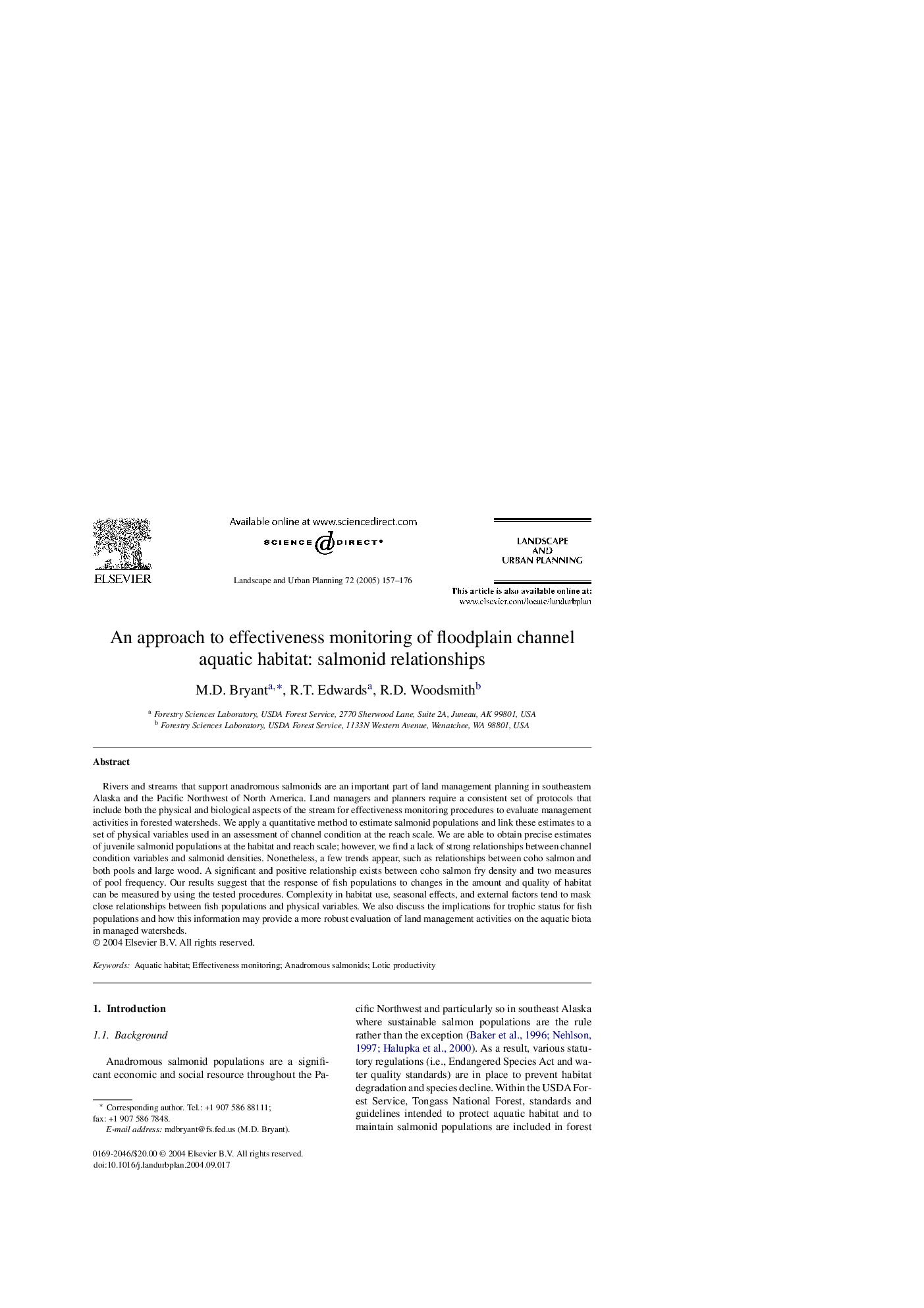| Article ID | Journal | Published Year | Pages | File Type |
|---|---|---|---|---|
| 9736079 | Landscape and Urban Planning | 2005 | 20 Pages |
Abstract
Rivers and streams that support anadromous salmonids are an important part of land management planning in southeastern Alaska and the Pacific Northwest of North America. Land managers and planners require a consistent set of protocols that include both the physical and biological aspects of the stream for effectiveness monitoring procedures to evaluate management activities in forested watersheds. We apply a quantitative method to estimate salmonid populations and link these estimates to a set of physical variables used in an assessment of channel condition at the reach scale. We are able to obtain precise estimates of juvenile salmonid populations at the habitat and reach scale; however, we find a lack of strong relationships between channel condition variables and salmonid densities. Nonetheless, a few trends appear, such as relationships between coho salmon and both pools and large wood. A significant and positive relationship exists between coho salmon fry density and two measures of pool frequency. Our results suggest that the response of fish populations to changes in the amount and quality of habitat can be measured by using the tested procedures. Complexity in habitat use, seasonal effects, and external factors tend to mask close relationships between fish populations and physical variables. We also discuss the implications for trophic status for fish populations and how this information may provide a more robust evaluation of land management activities on the aquatic biota in managed watersheds.
Related Topics
Life Sciences
Agricultural and Biological Sciences
Ecology, Evolution, Behavior and Systematics
Authors
M.D. Bryant, R.T. Edwards, R.D. Woodsmith,
